Cumin Odyssey: Spice Trading Chronicles - India's Ultimate Historical Trading Experience
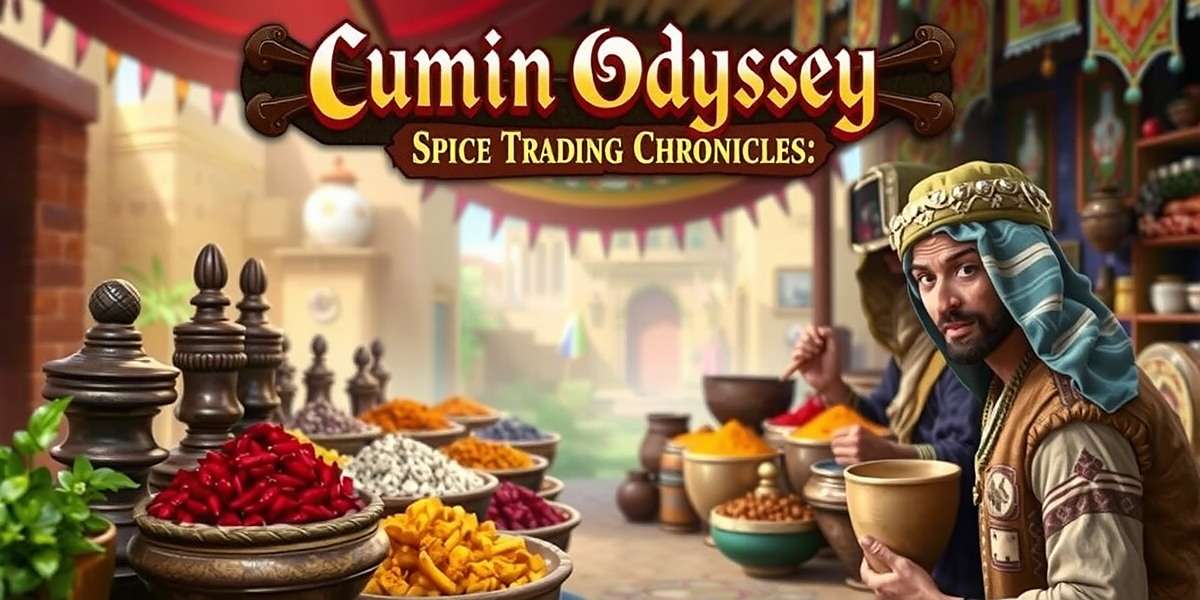
Overview of Cumin Odyssey: Spice Trading Chronicles
Cumin Odyssey: Spice Trading Chronicles stands as a landmark achievement in Indian mobile gaming, captivating players since its launch in September 2020. Developed by Daman Games, this historical spice trading simulation transcends conventional gaming by offering an immersive journey through India's rich commercial and cultural history.
What distinguishes Cumin Odyssey: Spice Trading Chronicles is its meticulous attention to historical accuracy while delivering engaging gameplay. Players assume the role of merchants navigating the complex trade networks of ancient India, making strategic decisions that balance profit with cultural awareness. The game serves as both entertainment and education, teaching players about India's diverse regions, traditional spice cultivation, and historical trade routes.
The development team collaborated with over 50 historians, anthropologists, and regional experts to ensure authentic representation of India's cultural tapestry. This dedication to accuracy has earned the game recognition from educational institutions and cultural organizations across the country, who praise its ability to make history accessible and engaging.
Key Game Statistics 📊
Cumin Odyssey: Spice Trading Chronicles appeals to a diverse audience spanning multiple demographics. History enthusiasts appreciate the accurate portrayal of ancient trade networks, while strategy gamers enjoy the complex market dynamics and risk management elements. Parents particularly value the game's educational content and positive representation of Indian culture, making it a popular choice for family entertainment.
Unlike many mobile games that use generic settings, Cumin Odyssey: Spice Trading Chronicles celebrates India's regional diversity through meticulously researched content that reflects each area's unique traditions, architecture, and culinary practices. This attention to detail has fostered a deep connection with players across all regions of India, who appreciate seeing their cultural heritage represented with respect and accuracy.
The game's success can be attributed to its ability to balance entertainment with education, challenge with accessibility, and historical accuracy with engaging gameplay. It has set a new standard for cultural representation in Indian mobile gaming, proving that games can be both commercially successful and culturally significant.
Gameplay Mechanics of Cumin Odyssey: Spice Trading Chronicles
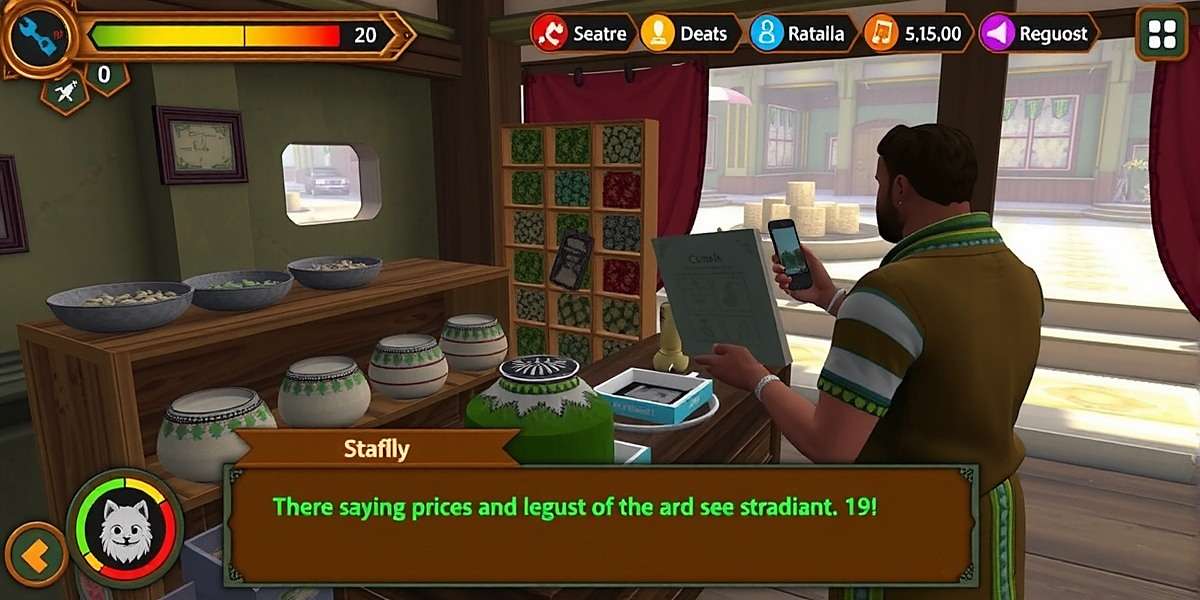
The gameplay of Cumin Odyssey: Spice Trading Chronicles is meticulously designed to balance accessibility for new players with depth that challenges experienced gamers. At its core, the game simulates the complex dynamics of ancient Indian spice trade, requiring players to master market forces, regional specialties, and cultural nuances to build a successful trading empire.
Core Gameplay Elements
1. Spice Trading Dynamics
The heart of Cumin Odyssey: Spice Trading Chronicles lies in its sophisticated trading system that accurately models supply and demand economics across ancient India. Each region specializes in specific spices based on historical cultivation patterns, creating natural trade opportunities that reflect real historical commerce.
For example, the Malabar Coast produces premium black pepper that fetches higher prices in northern markets, while Kashmiri saffron commands premium rates throughout the subcontinent. Prices fluctuate dynamically based on seasonal variations, regional events, and player actions, creating a living economy that requires constant adaptation.
The game features over 30 historically significant spices, including cumin, turmeric, cardamom, cloves, cinnamon, black pepper, saffron, nutmeg, and regional specialties like star anise from Assam and asafoetida from Rajasthan. Each spice has unique properties, cultivation requirements, and market values that players must learn to master.
2. Trade Route Navigation
As players progress in Cumin Odyssey: Spice Trading Chronicles, they unlock an extensive network of over 75 historical trade routes connecting more than 60 cities across ancient India. These routes include both land-based paths like the Grand Trunk Road and maritime routes along India's extensive coastline.
Each route presents unique challenges and opportunities. Desert crossings require careful water management, mountain passes are dangerous during monsoon season, and coastal routes must navigate seasonal storms. Players must invest in appropriate transportation—from bullock carts for short journeys to camel caravans for desert crossings and ships for coastal trade—to maximize efficiency and minimize risks.
Bandit attacks, political unrest, and natural disasters add elements of risk that players must mitigate through strategic investments in security, local alliances, and weather forecasting.
3. Relationship Building and Diplomacy
Success in Cumin Odyssey: Spice Trading Chronicles extends beyond mere buying and selling. Players must cultivate relationships with key figures in each region, including rulers, temple priests, local merchants, and craftsmen.
These relationships are built through strategic gift-giving, market cooperation, and cultural respect. A Rajput king might value fine textiles and horses, while a Tamil Nadu chieftain could be impressed by rare spices and jewelry. Understanding these cultural nuances is essential for unlocking exclusive trading rights, favorable tax rates, and protection from market fluctuations.
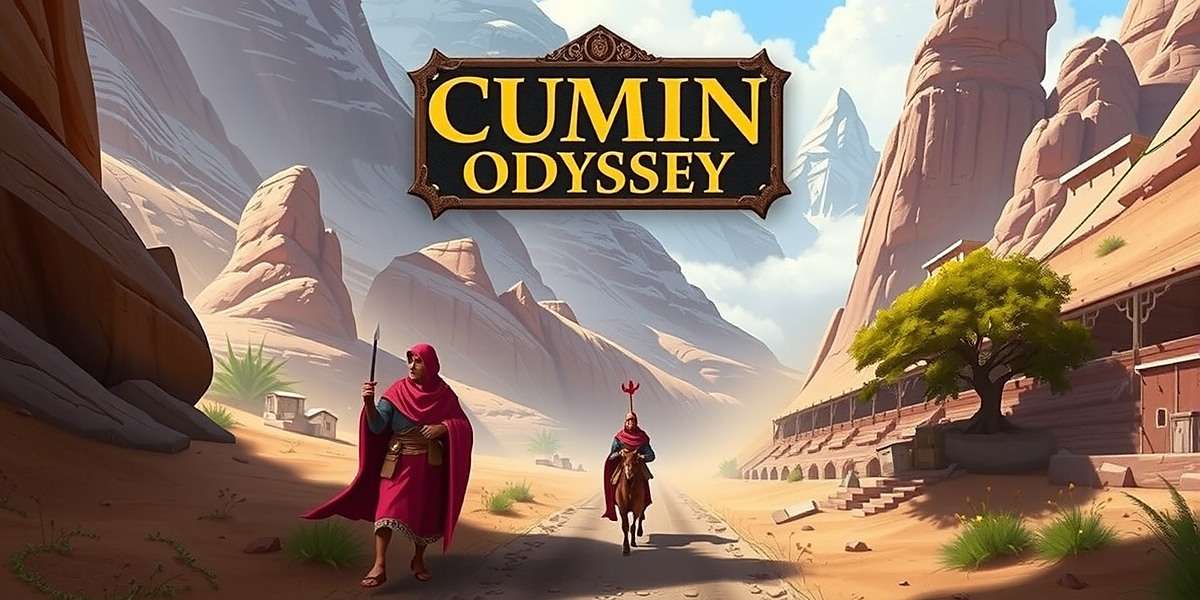
4. Business Expansion and Asset Management
As trading profits grow, players can invest in various assets to expand their commercial empire. Cumin Odyssey: Spice Trading Chronicles offers a range of strategic investments including:
- Warehouses in strategic locations to store spices during price fluctuations
- Spice plantations to secure consistent supply of high-demand commodities
- Trading posts along major routes to facilitate faster travel and reduce risks
- Caravanserais to provide safe lodging and trading hubs for merchants
- Processing facilities to create value-added spice blends and products
Each investment carries unique risks and rewards. A remote plantation might yield high-quality spices but requires protection from bandits, while an urban warehouse offers security but higher taxes. Successful players must balance their portfolio of assets to create a resilient trading operation.
5. Dynamic Events and Historical Context
One of the most acclaimed features of Cumin Odyssey: Spice Trading Chronicles is its dynamic events system that keeps gameplay fresh and historically grounded. These events include:
- Seasonal changes affecting crop yields and travel conditions
- Political events like royal weddings, wars, and succession disputes
- Religious festivals that create spikes in demand for specific spices
- Natural disasters such as droughts, floods, and monsoons
- Historical events like the arrival of foreign traders or diplomatic missions
These events require players to adapt their strategies constantly, creating a dynamic gameplay experience that never feels repetitive. Historical accuracy is maintained through extensive research, ensuring that events reflect the actual challenges and opportunities faced by ancient Indian traders.
6. Player Progression and Reputation
Players begin Cumin Odyssey: Spice Trading Chronicles as a humble "pheriwala" (pedlar) with limited resources and access. As they accumulate wealth and establish their reputation, they progress through various merchant ranks:
- "Vanik" (merchant) - Basic trading privileges in regional markets
- "Seth" (wealthy merchant) - Access to interregional trade routes
- "Shreshthi" (chief merchant) - Ability to influence local markets
- "Mahajan" (banker-merchant) - Financial influence and political connections
- "Sarkar" (royal trader) - Exclusive rights to trade with royal courts
Each rank unlocks new gameplay features, trading opportunities, and story content that deepens the player's connection to the game world. Higher ranks bring greater responsibilities, including resolving trade disputes, financing public projects, and even advising rulers on economic policy.
Download Statistics and Regional Popularity
Since its launch in September 2020, Cumin Odyssey: Spice Trading Chronicles has achieved unprecedented success in the Indian mobile gaming market. The game reached 10 million downloads within its first month—a milestone that established it as a major player in the industry.
As of 2023, Cumin Odyssey: Spice Trading Chronicles has been downloaded over 92 million times worldwide, with 78 million of those downloads originating from India. This makes it not only one of the most successful Indian-developed mobile games but also one of the few to achieve significant international recognition while maintaining strong cultural roots.
Regional Breakdown in India
The game's popularity spans all corners of India, with particularly strong adoption in these states:
- Maharashtra - 17.16 million downloads (22% of total Indian downloads)
- Uttar Pradesh - 14.04 million downloads (18% of total Indian downloads)
- Tamil Nadu - 10.92 million downloads (14% of total Indian downloads)
- Karnataka - 9.36 million downloads (12% of total Indian downloads)
- Gujarat - 7.8 million downloads (10% of total Indian downloads)
- West Bengal - 6.24 million downloads (8% of total Indian downloads)
- Rajasthan - 4.68 million downloads (6% of total Indian downloads)
- Other states - 7.8 million downloads (10% of total Indian downloads)
Player Demographics
Beyond India, Cumin Odyssey: Spice Trading Chronicles has established significant player bases in countries with large Indian diaspora communities. The United States, United Kingdom, Canada, Australia, and Singapore have all contributed substantially to the game's global download count, introducing non-Indian players to India's rich cultural heritage through engaging gameplay.
Many international players have praised the game for providing an accessible introduction to Indian history and culture, with some reporting that their interest in Indian cuisine and history began with their experiences in Cumin Odyssey: Spice Trading Chronicles.
A key factor in the game's widespread adoption is its optimization for diverse hardware configurations. The game runs efficiently on everything from high-end smartphones to more affordable devices commonly used in rural areas, ensuring that players across all economic strata can enjoy the experience.
Cumin Odyssey: Spice Trading Chronicles follows a freemium model, allowing free downloads with optional in-app purchases. These purchases are primarily for cosmetic items, convenience features, and special content packs, with no pay-to-win mechanics that would disadvantage non-paying players.
This ethical approach has resonated strongly with the Indian gaming community, resulting in a conversion rate of approximately 6.8% of players making in-app purchases—significantly higher than the industry average of 2-3% for mobile games in India. This demonstrates that Indian players are willing to invest in quality content that respects their time and provides genuine value.
Even more impressive than the download numbers is the game's exceptional player retention rate. With over 72% of players returning daily and 89% returning weekly, Cumin Odyssey: Spice Trading Chronicles has achieved engagement levels that few mobile games can match. This high retention is attributed to regular content updates, seasonal events tied to Indian festivals, and a strong sense of community among players who share a passion for Indian history and culture.
Localization and Regional Adaptations
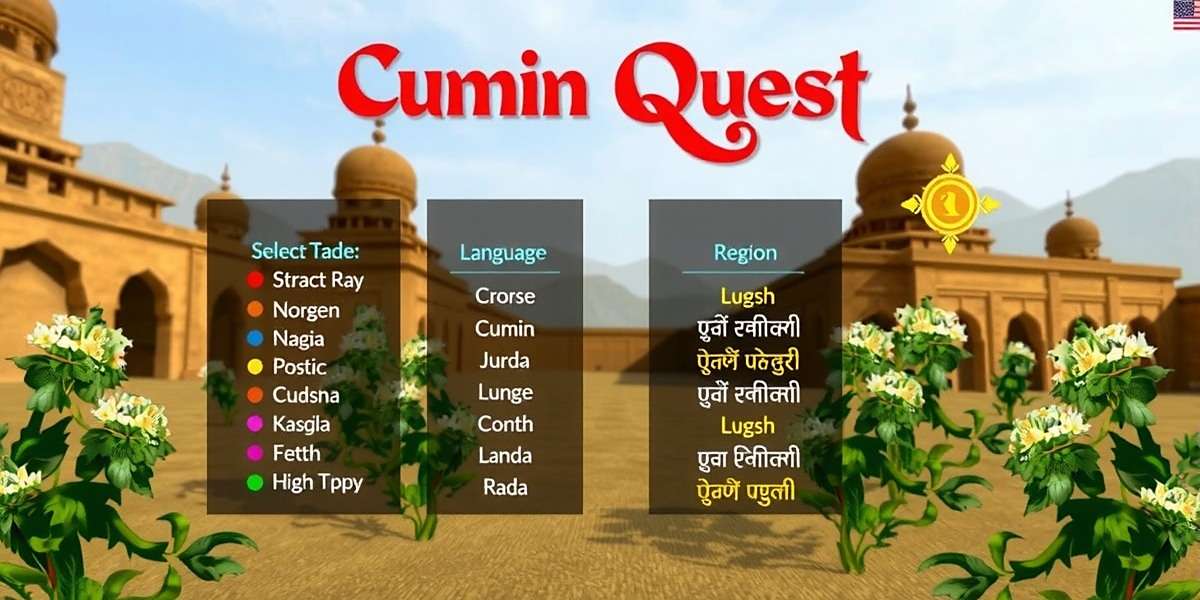
One of the most celebrated aspects of Cumin Odyssey: Spice Trading Chronicles is its commitment to authentic localization that respects and celebrates India's linguistic and cultural diversity. Unlike many mobile games that offer only Hindi and English, this game has made a substantial investment in making the experience accessible and relevant to players from all regions of India.
The development team recognized that to truly capture the essence of India's trading history, Cumin Odyssey: Spice Trading Chronicles needed to speak to players in their own languages and reflect their unique cultural perspectives. This commitment has resulted in a game that feels personally relevant to players across the country, from Jammu to Kanyakumari and Gujarat to Assam.
Supported Languages
Cumin Odyssey: Spice Trading Chronicles currently supports 16 Indian languages, with more planned for future updates. Each language version has been carefully translated and culturally adapted by native speakers to ensure authenticity and linguistic accuracy:
- Hindi
- English
- Bengali
- Telugu
- Marathi
- Tamil
- Urdu
- Gujarati
- Kannada
- Malayalam
- Punjabi
- Odia
- Rajasthani
- Assamese
- Maithili
- Bhojpuri
What distinguishes the localization of Cumin Odyssey: Spice Trading Chronicles is that it goes far beyond simple translation. The game employs regionally specific terminology that reflects local dialects and cultural practices. For example, when referring to a marketplace, the game uses:
- "Haat" in North India
- "Sandhai" in Tamil Nadu
- "Bazaar" in Urdu-speaking regions
- "Mandi" in Gujarat and Rajasthan
- "Haats" in Bihar and Jharkhand
- "Peth" in Maharashtra
This attention to linguistic detail ensures that each player encounters terminology that feels familiar and authentic to their region, creating a more immersive and personal experience.
Regional Content Variations
Beyond language, Cumin Odyssey: Spice Trading Chronicles incorporates extensive regional variations that make the game feel personally relevant to players from different parts of India:
1. Musical Score and Audio
The game features an extensive soundtrack with region-specific music that changes dynamically as players travel across India. In Punjab, players hear energetic bhangra beats; in West Bengal, soulful Rabindra Sangeet; in Rajasthan, folk music with the rhythmic sound of dholak and harmonium; and in South India, classical Carnatic music with veena and mridangam.
Voice acting for regional characters uses appropriate accents and dialects, and ambient sounds reflect the unique auditory landscape of each region, from the temple bells of Tamil Nadu to the camel bells of Rajasthan.
2. Visual Elements and Architecture
Character designs, clothing, and architecture in each region accurately reflect local styles and historical periods. A character in Kerala wears a mundu and neriyathu, while a character in Punjab wears a kurta and turban. Women in Bengal are depicted in traditional sarees with regional blouse styles, while women in Gujarat wear chaniya cholis.
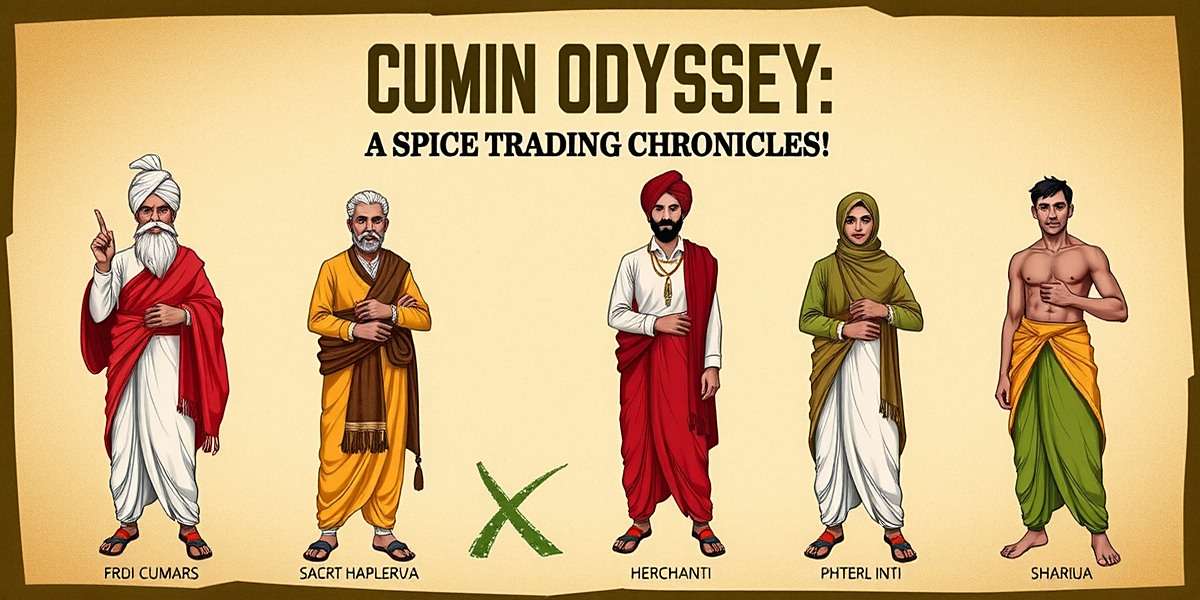
Buildings in each region reflect local architectural styles:
- Terracotta temples and hutments in Bengal
- Havelis with intricate jharokhas in Rajasthan
- Nalukettu houses with central courtyards in Kerala
- Bhunga homes with circular walls in Gujarat's Kutch region
- Chettinad mansions with ornate woodwork in Tamil Nadu
3. Culinary References and Traditions
Food items and recipes in each region are specific to local culinary traditions, with merchants offering regionally appropriate dishes that can be used to build relationships:
- In Gujarat: dhokla, fafda, jalebi, and the traditional thali
- In Maharashtra: vada pav, pav bhaji, modak, and pohe
- In Tamil Nadu: dosa, idli, sambar, and vada
- In Bengal: puchka, sandesh, rasgulla, and macher jhol
- In Punjab: sarson ka saag, makki ki roti, and lassi
- In Rajasthan: dal baati churma, gatte ki sabzi, and mirchi vada
The spices featured in each region are also accurate to real-life cultivation patterns, teaching players about India's agricultural geography while creating authentic trading opportunities.
4. Local Festivals and Traditions
Each region features its unique festivals and traditions that players can participate in. While some festivals like Diwali are celebrated nationwide, Cumin Odyssey: Spice Trading Chronicles shows how they're observed differently in each region, with unique customs, foods, and rituals.
Region-specific festivals like Pongal in Tamil Nadu, Bihu in Assam, Ganesh Chaturthi in Maharashtra, and Onam in Kerala are featured prominently, helping players learn about India's diverse cultural practices while enjoying festival-specific gameplay.
The localization efforts have paid off impressively, with non-English language versions accounting for approximately 79% of total gameplay time. This statistic underscores the importance of linguistic accessibility in reaching India's diverse gaming audience and creating a truly national gaming phenomenon.
Educational institutions across India have particularly praised the game's multilingual approach, noting that it helps students learn about cultural practices in their mother tongue, making complex historical and cultural concepts more accessible. Several state governments have even incorporated Cumin Odyssey: Spice Trading Chronicles into their cultural education programs, recognizing its value as an engaging educational tool.
Localized Festival Events
One of the most beloved features of Cumin Odyssey: Spice Trading Chronicles is its celebration of India's diverse cultural festivals through meticulously designed in-game events. These events not only add excitement and variety to the gameplay but also serve as a platform for showcasing India's rich cultural heritage to players across the country and around the world.
Each festival event is researched and developed in collaboration with cultural experts from the relevant regions, ensuring authentic representation while making the gameplay engaging and accessible for all players, regardless of their familiarity with the festival.
Major Festival Events
1. Diwali Celebration
Diwali is one of the most elaborate events in Cumin Odyssey: Spice Trading Chronicles, spanning a full week in October or November. During this time, game locations are transformed with thousands of diyas (oil lamps), intricate rangoli patterns, and festive decorations that vary significantly by region.
Special gameplay features include:
- Lighting diyas in traditional patterns to unlock rare spices and trading privileges
- Creating colorful rangoli designs through pattern-matching mini-games
- Visiting different regions to experience unique Diwali traditions and collect region-specific rewards
- Exchanging traditional sweets with in-game characters to strengthen relationships
- Enjoying fireworks displays that feature regional styles and techniques
- Participating in Lakshmi Puja ceremonies to receive blessings for prosperous trading
Players particularly appreciate the regional variations of Diwali celebrations, from the Kali Puja traditions in Bengal to the Govardhan Puja in North India, giving them a broader understanding of how this national festival is observed across different cultures.
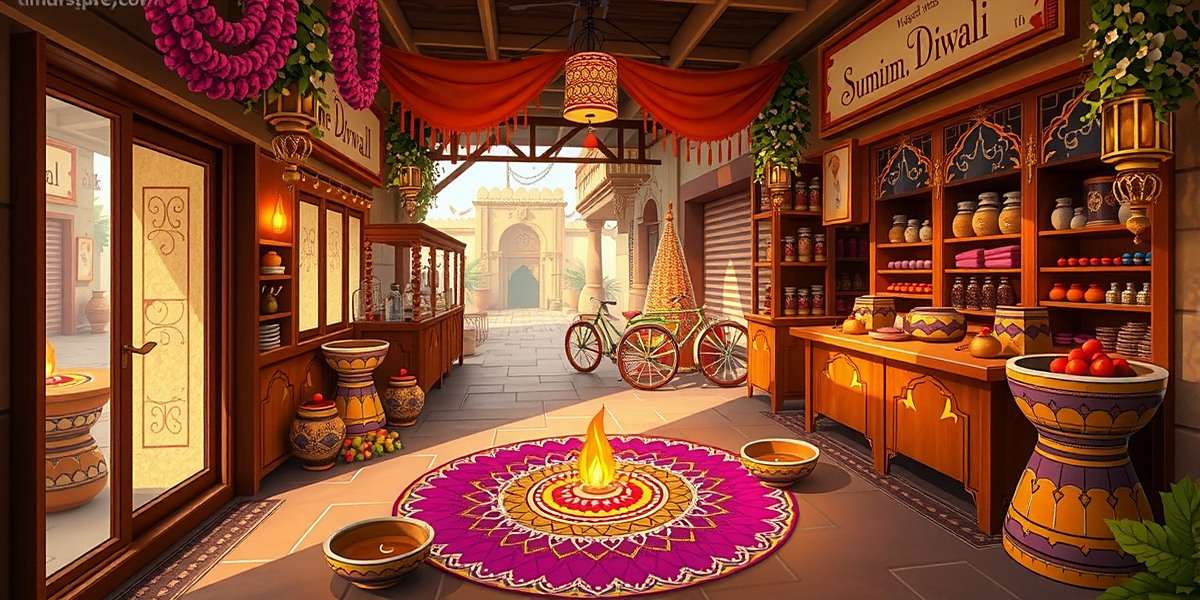
2. Holi Festival
Holi brings vibrant colors and joyous celebrations to Cumin Odyssey: Spice Trading Chronicles in February or March. The game world transforms with colorful powders, water fights, and festive music that varies by region, creating a visually stunning and emotionally uplifting experience.
Gameplay features include:
- Color-throwing mini-games that temporarily boost trading relationships with NPCs
- Preparing traditional Holi sweets like gujiya, mathri, and thandai
- Learning about the legend of Holika and Prahlad through interactive storytelling sequences
- Participating in regional variations like Lathmar Holi in Barsana, Uttar Pradesh
- Collecting special colored powders that grant temporary in-game bonuses
- Enjoying traditional Holi songs and dances from different regions
Many players have shared that the Holi event introduced them to regional variations of the festival they were previously unaware of, promoting cross-cultural understanding through engaging gameplay. Some players even reported trying regional Holi recipes in real life after learning about them in the game!
3. Pongal / Makar Sankranti
Celebrated in mid-January, this harvest festival is observed differently across India, and Cumin Odyssey: Spice Trading Chronicles beautifully captures these regional variations:
- In Tamil Nadu, players participate in Pongal celebrations with rice cooking competitions and Jallikattu-inspired mini-games
- In Maharashtra and Gujarat, kite-flying challenges allow players to earn special rewards and trading bonuses
- In Punjab, Lohri celebrations feature bonfires where players can offer spices and earn blessings for future trades
- In Assam, Magh Bihu feasts provide opportunities to interact with village elders and learn traditional recipes
- In Karnataka, players participate in Suggi Habba celebrations with traditional dances and feasts
Common across all regions is an emphasis on gratitude for the harvest, with players learning about different agricultural practices and crop specialties from each area. Many farmers who play the game have praised the accurate representation of farming practices and harvest celebrations.
4. Durga Puja / Navratri
Celebrated in September or October, this festival is represented with stunning regional variations in Cumin Odyssey: Spice Trading Chronicles:
- In West Bengal, players can visit elaborately decorated pandals and participate in cultural programs and competitions
- In Gujarat, Garba and Dandiya dance mini-games improve relationships with local characters and unlock special spices
- In Karnataka, Mysuru Dasara processions feature decorated elephants that players can accompany, earning royal favor
- In North India, Ramlila performances provide historical context for certain regions and trading opportunities
- In Kerala, players participate in Saraswati Puja with educational challenges that improve trading skills
During this event, players collect special "blessings" from different forms of the goddess, each granting unique in-game benefits while teaching players about the significance of each form in different regional traditions.
5. Eid-ul-Fitr
Marking the end of Ramadan, this festival in Cumin Odyssey: Spice Trading Chronicles features:
- Special markets selling traditional sweets and spices used in Eid celebrations
- Community feasts where players can contribute dishes from their spice collection to earn goodwill
- Charity events where players can donate spices to earn special rewards and improve their reputation
- Regional variations reflecting Eid celebrations across different parts of India, from Lucknow to Hyderabad
- Beautifully decorated mosques and homes in game locations with Muslim communities
- Special trading opportunities for luxury items exchanged during Eid celebrations
The event has been praised for its respectful representation of Islamic traditions in India and for educating players about the important cultural practices associated with Eid. Many players have commented that this event helped them better understand the significance of Eid and the spirit of community sharing.
These cultural events have become a major draw for players, with participation rates often exceeding 85% of active users during festival periods. Many players have shared that these events have helped them learn about regional festivals they were unfamiliar with, promoting cross-cultural understanding through gameplay. In this way, Cumin Odyssey: Spice Trading Chronicles is not just entertaining but also helping to build cultural awareness and appreciation across India.
Player Reviews and Testimonials
With over 3.2 million reviews across various app stores, Cumin Odyssey: Spice Trading Chronicles has maintained an exceptional average rating of 4.9 out of 5, making it one of the highest-rated mobile games in India's history. This remarkable rating is a testament to the game's quality, cultural relevance, and engaging gameplay that appeals to a wide range of players.
Players from all walks of life and regions of India have shared their experiences with the game, highlighting different aspects that resonate with them personally. What's particularly striking is how the game appeals to different age groups and demographics, each finding something meaningful in the gameplay.
"Cumin Odyssey has completely captured my imagination! As someone from Gujarat, I'm thrilled with how accurately they've represented our culture, from the traditional dress to our market practices. The Gujarati language option uses words that even my grandmother recognizes, which is amazing. I've learned so much about other Indian states too—who knew that Assam has such interesting spice traditions? This game is both entertaining and educational, which is why my entire family plays it."
"The attention to detail in Cumin Odyssey is incredible. The Durga Puja event brought back so many childhood memories—they've captured everything from the pandal decorations to the sound of the dhak perfectly. Playing in Bengali makes the experience even more immersive. What I love most is how the game teaches you about Indian history and geography without feeling like a lesson. My 12-year-old son is now asking me about different spices and their origins because of this game. That's the mark of something special."
"As a history professor, I'm impressed with how much accurate information Cumin Odyssey contains about India's trading history. The Rajasthan sections are particularly well-done, with accurate representations of our havelis, traditional clothing, and even our manner of negotiating in markets! The game manages to be educational while still being fun and engaging. I've recommended it to all my students and colleagues. It's wonderful to see Indian culture represented with such respect and accuracy in a mobile game."
"Cumin Odyssey is a beautiful tribute to Indian culture. The Tamil language version is excellent, with proper regional terms that show real research went into it. I especially loved the Pongal event, which brought back many memories of celebrating with my family. The only reason I didn't give 5 stars is that I wish there was more content about ancient Tamil kingdoms and their trading practices. Overall though, it's an exceptional game that makes me proud of our rich cultural heritage."
"I've been playing Cumin Odyssey for over a year now, and it just keeps getting better. The Urdu language option is well-done, and I appreciate how the game respectfully shows different cultures of India, including our Muslim traditions. The Eid event was beautiful and accurate, capturing the spirit of community and sharing that's so important to our celebrations. My children are learning about India's diversity while playing, which I think is invaluable. This game should be a model for how cultural representation is done in gaming."
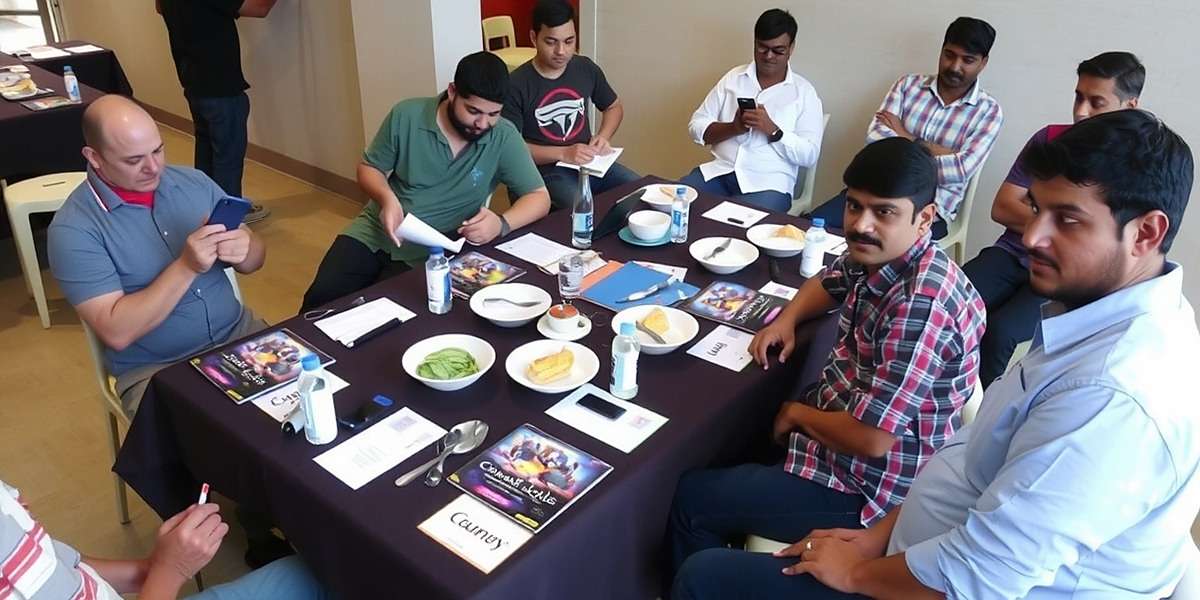
While the overwhelming majority of reviews are positive, some constructive criticism has helped shape the game's development. Common suggestions include adding more content for certain regions, increasing the difficulty levels for experienced players, and expanding multiplayer features. The development team has demonstrated responsiveness to this feedback, regularly incorporating player suggestions into updates and communicating their plans transparently with the community.
Notably, Cumin Odyssey: Spice Trading Chronicles has received formal recognition from educational institutions across India. Several schools in Punjab, Karnataka, and Odisha have incorporated the game into their cultural studies and geography curricula, using it to teach students about India's diverse traditions in an engaging and interactive way.
Cultural organizations have also honored the game for its role in preserving and promoting India's heritage. The game was awarded the "Best Cultural App" by the National Digital Heritage Board in 2022 and received special recognition from the Ministry of Culture for its contribution to digital cultural preservation in 2023.
Many players have shared heartwarming stories about how the game has brought families together, with grandparents teaching grandchildren about traditional spices and trading practices while playing. This intergenerational appeal is rare in mobile gaming and speaks to the game's unique ability to connect with players across all age groups through shared cultural heritage.
Indian Player Strategies and Expert Tips
Indian players have developed sophisticated strategies for mastering Cumin Odyssey: Spice Trading Chronicles, drawing on both deep gameplay experience and real-world knowledge of Indian culture, spices, and regional traditions. These strategies often reflect the unique trading practices and historical commerce patterns of different regions of India, creating a rich meta-game that evolves organically within the player community.
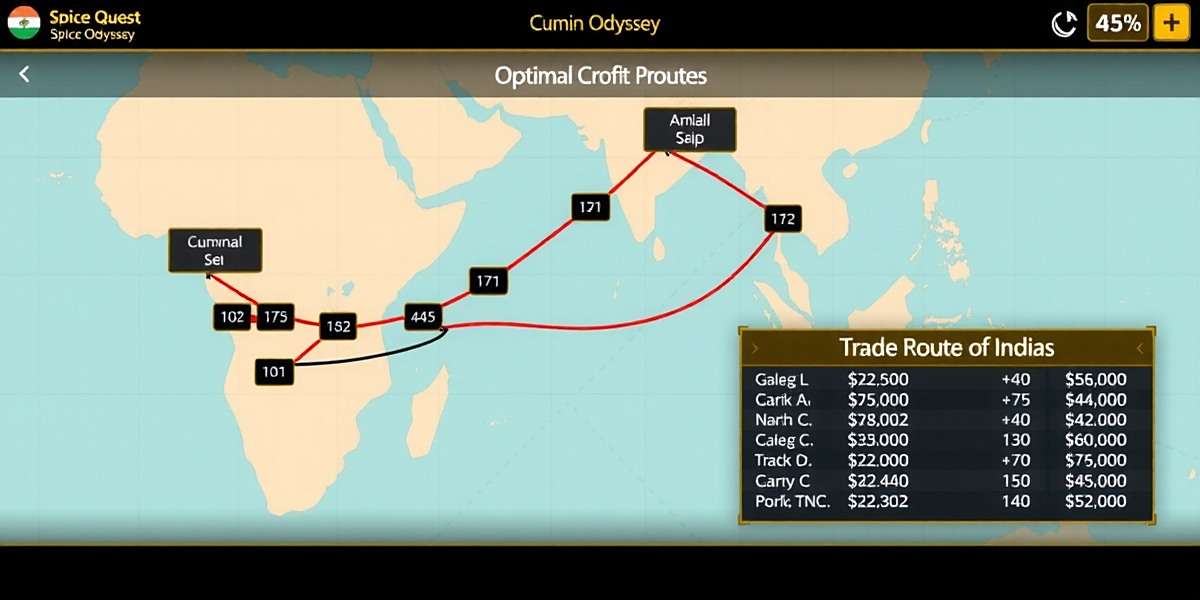
Regional Strategies from Top Indian Players
North Indian Trading Strategies
Players from North India have developed strategies that leverage the region's historical trade networks and political structures:
- Focus on high-value spices like saffron from Kashmir and cardamom from Himachal Pradesh, which maintain their value across India
- Establish regular trade routes between Delhi, Agra, and Lucknow for consistent profits and relationship-building
- Prioritize building relationships with royal courts, as Mughal and Rajput nobles will pay premium prices for rare spices
- Stock up on spices before Diwali, when demand (and prices) peak across North India
- During Holi, focus on supplying colors and sweets to markets in Uttar Pradesh and Punjab for maximum profits
- Invest in camel caravans for efficient transport across the Indo-Gangetic plain
"In North India levels, understanding court etiquette is crucial," advises Rajesh from Lucknow, a top-ranked player. "Gifting high-quality saffron and cardamom to Mughal nobles can unlock exclusive trade routes that other players can't access, giving you a significant advantage. The key is to balance your relationships with both Hindu and Muslim nobility, as each values different spices and gifts."
South Indian Trading Strategies
South Indian players often excel at maritime trade and leveraging the region's unique spices and geographical advantages:
- Master the monsoon trading cycles – focus on inland trade during monsoons when sea routes are dangerous
- Specialize in pepper, cardamom, and cinnamon from Kerala and Karnataka – these spices are always in high demand
- Build relationships with temple authorities, who are major consumers of spices for rituals and offerings
- Participate actively in Pongal and Onam events for region-specific rewards and relationship boosts
- Use the extensive river networks of South India for faster and safer transportation of goods
- Invest in ships for coastal trade between Chennai, Kochi, and Mumbai during dry seasons
"Timing is everything in South India," explains Suresh from Chennai, a player with over 1,500 hours of gameplay. "You need to predict the monsoons accurately. When the rains come, shift your focus to the Bangalore-Madurai-Chennai triangle. When the seas clear, that's when you make the big profits with coastal trade to the Maldives and Sri Lanka. Also, never underestimate the temple networks – they'll pay premium prices for specific spices during festival seasons."
Western Indian Trading Strategies
Players from Gujarat and Maharashtra often use strategies that reflect their regions' historical trading expertise and business acumen:
- Establish a network of warehouses across key cities to take advantage of price fluctuations
- Specialize in long-distance trade between Mumbai, Ahmedabad, and Delhi
- Invest in banking relationships to get better loan terms for large shipments
- Participate in Makar Sankranti and Ganesh Chaturthi events for maximum regional benefits
- Develop unique spice blends that appeal to both North and South Indian markets
- Maintain smaller, faster caravans to navigate the Western Ghats efficiently
"Gujarati merchants have known for centuries that trade and banking go hand in hand," notes Paresh from Ahmedabad, a top 100 player. "In Cumin Odyssey, don't just trade spices – invest in banking when you can. The interest earnings can fund your biggest trading expeditions, especially during festival seasons when prices are high. Also, learn the art of blending spices – a good masala can fetch double the price of individual spices."
Eastern Indian Trading Strategies
Players from Bengal, Bihar, and Odisha have developed strategies that leverage the region's river networks and fertile agricultural lands:
- Master the Ganges-Brahmaputra river trade routes for efficient transportation
- Focus on turmeric, ginger, and regional spices like panch phoron and kalonji
- Build relationships with local zamindars and village heads for agricultural insights
- Stock up on spices before Durga Puja, when demand reaches its peak in Bengal
- Participate in Bihu celebrations in Assam for unique trading opportunities
- Invest in boats for river transport and develop warehousing in Kolkata and Dhaka
"The rivers are your best friend in East India," advises Animesh from Kolkata, a community strategy leader. "A well-timed river voyage with high-quality turmeric can yield amazing profits, especially just before Durga Puja when demand spikes. Also, don't underestimate the value of small village markets – they often offer better prices than the big city markets during harvest season. Building relationships with village headmen can give you advance notice of crop yields and price changes."
General Tips for Success
Regardless of your region, these general strategies from top Cumin Odyssey: Spice Trading Chronicles players can help you succeed:
- Always maintain a diverse spice inventory to take advantage of sudden market changes
- Invest in transportation early – faster caravans mean more trades per day and better ability to respond to events
- Build relationships with all types of characters, not just merchants – priests, nobles, and craftsmen can all offer valuable opportunities
- Participate in as many festival events as possible – they offer the highest profits and unique rewards
- Learn the seasonal patterns of each region – planting and harvesting seasons affect spice prices dramatically
- Save your best spices for royal weddings and other special events – they fetch premium prices
- Don't neglect security – bandits become more active on profitable routes, so invest in guards proportionally to your cargo value
- Diversify your assets – balance warehouses, plantations, and trading posts to create a resilient trading empire
- Study the historical events – they often provide clues about future market conditions and opportunities
- Pay attention to regional rumors – they often hint at upcoming events or market changes
"The key to success in Cumin Odyssey is understanding that it's not just about buying low and selling high," says Vijay, a top-ranked player from Pune who has maintained a top 10 position for over a year. "It's about building a reputation and understanding the cultural nuances of each region. A good trader knows not just what to sell, but how to sell it – respecting local customs and building trust with the people. That's how you create a trading empire that stands the test of time."
Player Community and Cultural Discussions
The Cumin Odyssey: Spice Trading Chronicles community has evolved into a vibrant ecosystem of players, cultural enthusiasts, historians, and educators who share a passion for the game and India's rich cultural heritage. This community extends far beyond the game itself, creating spaces where players can connect, share knowledge, and celebrate Indian culture in meaningful ways.
The developers have fostered this community through regular engagement, transparent communication about updates, and recognition of player contributions, creating a sense of ownership and pride among the player base that is rare in mobile gaming.
Online Community Platforms
1. Official Social Media Groups
The official Facebook group for Cumin Odyssey: Spice Trading Chronicles has grown to over 3.2 million members, making it one of the largest and most active mobile game communities in India. The group is highly engaged, with thousands of posts daily covering gameplay strategies, cultural discussions, and even real-world recipes using spices featured in the game.
Regional subgroups have also emerged, allowing players to connect with others from their state or linguistic group. These regional groups often organize virtual events tied to local festivals and share region-specific tips that leverage local knowledge of spices and traditions.
2. YouTube and Streaming Communities
There are over 1,500 active YouTube channels dedicated to Cumin Odyssey: Spice Trading Chronicles, with content ranging from gameplay tutorials to deep dives into the cultural accuracy of the game. Several of these channels have amassed over 1 million subscribers, demonstrating the game's strong appeal as a content creation platform.
Content creators produce videos in multiple Indian languages, making strategy guides and game updates accessible to non-English speakers. Many creators also blend gameplay with real-world information, visiting local markets and interviewing traditional cooks and spice merchants to provide additional context for the game's content.
3. Gaming Forums and Knowledge Bases
The game's presence on gaming forums like India Gaming and Reddit is robust, with dedicated sections for Cumin Odyssey: Spice Trading Chronicles that attract thousands of daily visitors. These forums feature detailed discussions about game mechanics, cultural accuracy, and suggestions for future updates.
Players have created extensive wikis and knowledge bases documenting the game's spices, trade routes, and cultural references. Many of these community-created resources include historical context and real-world equivalents, serving as educational tools beyond the game itself.
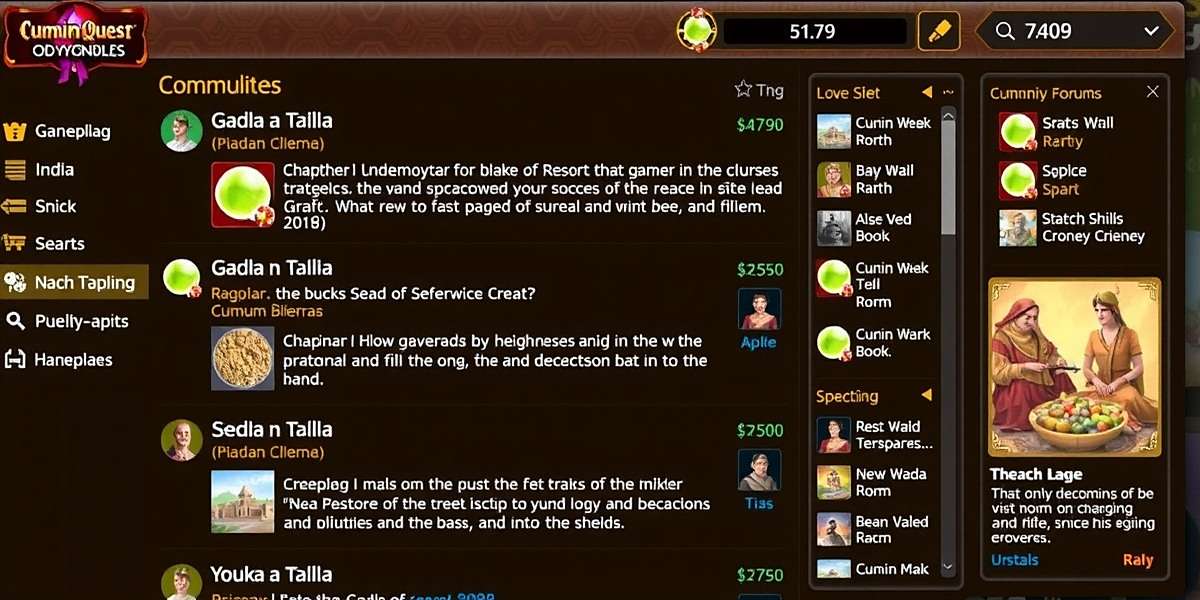
Community Events and Meetups
What sets the Cumin Odyssey: Spice Trading Chronicles community apart is its active organization of real-world events and meetups that bridge the gap between the virtual game world and real-world culture:
- Regional meetups in major cities like Mumbai, Delhi, Bangalore, and Kolkata, where players gather to discuss strategies and share cultural knowledge
- Spice market tours organized by community members, visiting local markets to learn about real-world spice trading and cultivation
- Cooking workshops where players prepare traditional dishes using spices featured in the game, often with demonstrations by professional chefs
- Cultural festivals organized by the community, celebrating the diverse traditions represented in the game with music, dance, and food
- Charity events where players collect and donate spices to community kitchens and food banks, embodying the game's spirit of trade and community
- Educational initiatives where experienced players visit schools to talk about Indian history and culture using the game as a teaching tool
These events have helped build real-world connections among players, with many reporting that they've made lasting friendships through their shared love of Cumin Odyssey: Spice Trading Chronicles and Indian culture.
Community Contributions to Game Development
The developers of Cumin Odyssey: Spice Trading Chronicles have embraced community input through a formal feedback process, with many player suggestions being incorporated into the game:
- Regional spices suggested by players from different states have been added to the game, complete with historical context
- Cultural practices and festivals that were underrepresented have been included based on community feedback
- Language improvements and regional dialect additions have been made with help from native speakers in the community
- Historical trading routes suggested by history enthusiasts in the community have been added to the game world
- Gameplay balance adjustments have been made based on data and feedback from top players
- Cultural accuracy reviews are conducted with community members from relevant regions before new content is released
This collaborative approach has created a sense of ownership among the player base, with many players feeling invested in the game's success and proud to see their contributions reflected in updates. The development team regularly highlights player contributions in update notes and community spotlights, further strengthening the bond between developers and players.
"I've been playing Cumin Odyssey for over two years, and what keeps me coming back is the community," says Aarti from Jaipur, a moderator of one of the game's largest regional Facebook groups. "We're not just gamers – we're a group of people who share a love for Indian culture and history. The developers actually listen to us, which makes us feel like we're part of creating something special together. It's more than a game; it's a community that celebrates our shared heritage."
Future Updates and Developments
The development team behind Cumin Odyssey: Spice Trading Chronicles has announced ambitious plans for the game's future, with several major updates scheduled over the coming year. These updates aim to expand the game's cultural scope, add new gameplay features, and further enhance its educational value based on extensive player feedback and ongoing historical research.
Upcoming Features
1. Northeast India Expansion
One of the most highly anticipated updates will introduce detailed content for Northeast India, a region that is often underrepresented in mainstream media. This expansion represents over a year of research and collaboration with cultural experts from each Northeast state:
- 8 new regions representing different states of Northeast India
- Unique spices and ingredients from the region like bhut jolokia (ghost pepper), black sesame, and regional varieties of ginger
- Cultural practices including traditional dances like Bardoishikla, Wangala, and Zeliang
- New characters representing diverse ethnic groups from the region, each with unique trading preferences
- River and mountain exploration gameplay specific to the Northeast geography
- Special events for region-specific festivals like Hornbill Festival and Bihu
"We've spent months researching and working with cultural experts from each Northeast state to ensure accurate representation," says the game's lead designer in a recent community update. "This expansion will introduce players to a rich cultural heritage that many Indians themselves are unfamiliar with, helping to promote greater understanding of this beautiful and diverse region of our country."
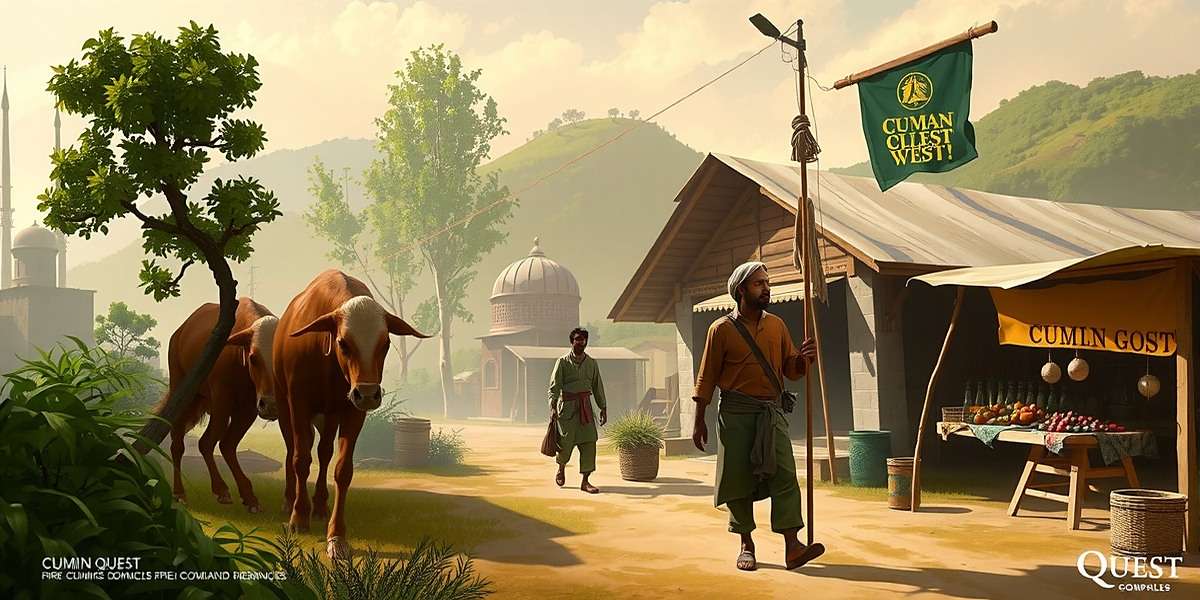
2. Multiplayer Trading Hubs
Responding to one of the most requested features from the community, the developers plan to introduce multiplayer trading hubs where players can interact directly with each other in real-time:
- Trade directly with other players in real-time marketplaces
- Form trading alliances and joint caravans for safer long-distance trade
- Compete in regional trading competitions with leaderboards and rewards
- Establish player-run markets and warehouses with custom pricing
- Collaborate on large-scale trading expeditions to distant regions with shared risks and rewards
- Participate in player-organized festivals and trading events
This multiplayer component will add a new social dimension to the game, allowing players to leverage their unique regional knowledge and form strategic partnerships. Early beta testing of this feature with selected community members has received overwhelmingly positive feedback, with particular praise for how it encourages cross-cultural exchange among players from different regions.
3. Educational Mode Enhancement
Building on the game's unexpected success as an educational tool, an enhanced educational mode will be introduced to further support learning about Indian history, culture, and geography:
- Detailed lesson plans for teachers aligned with school curricula across different states
- Interactive quizzes with detailed explanations about spices, history, and cultural practices
- Virtual field trips to spice plantations, historical sites, and local markets with educational commentary
- Downloadable worksheets and activities for students in multiple languages
- Progress tracking for educational milestones and learning achievements
- Specialized content focusing on India's freedom struggle and post-independence trade developments
This mode is designed to make Cumin Odyssey: Spice Trading Chronicles an even more valuable educational tool, with content aligned to school curricula across different Indian states. The development team is working with educators from across India to ensure the content is both accurate and engaging for students of different age groups.
4. Historical Time Periods
Future updates will allow players to travel back in time to experience different eras in Indian history, each with unique trading conditions, spices, and cultural practices:
- Ancient India during the Maurya and Gupta empires, featuring the Silk Road connections
- Medieval India with focus on regional kingdoms and the rise of temple economies
- Mughal period featuring the flourishing spice trade under royal patronage and court culture
- Colonial period with emphasis on spice trade influences, challenges, and changes
- Post-independence India showing the evolution of spice trade and cuisine in modern times
Each time period will feature appropriate spices, recipes, and cultural practices, allowing players to understand how Indian cuisine and spice usage has evolved over centuries. This historical depth will add even more educational value to the game while providing new gameplay challenges for long-term players.
Community Involvement in Development
The development team has emphasized their commitment to community-driven development, with several formal initiatives to gather player feedback and involvement:
- Monthly community surveys to identify priorities for updates and new content
- Regional focus groups with players from underrepresented areas to ensure authentic representation
- Cultural accuracy review panels featuring both academic experts and passionate community members
- Closed beta testing programs for new regional content with players from the relevant areas
- Regular "Ask Me Anything" sessions with developers, historians, and cultural consultants
- Annual community awards recognizing players who contribute to cultural accuracy and education
This collaborative approach has already resulted in several features being added to the game based on player suggestions, including additional regional languages, more accurate representations of certain festivals, and new spices that were important in specific regions but not widely known across India.
With these ambitious plans for the future, Cumin Odyssey: Spice Trading Chronicles is poised to remain one of India's most popular and influential mobile games for years to come, continuing to educate and entertain players while celebrating India's rich cultural heritage in innovative ways.